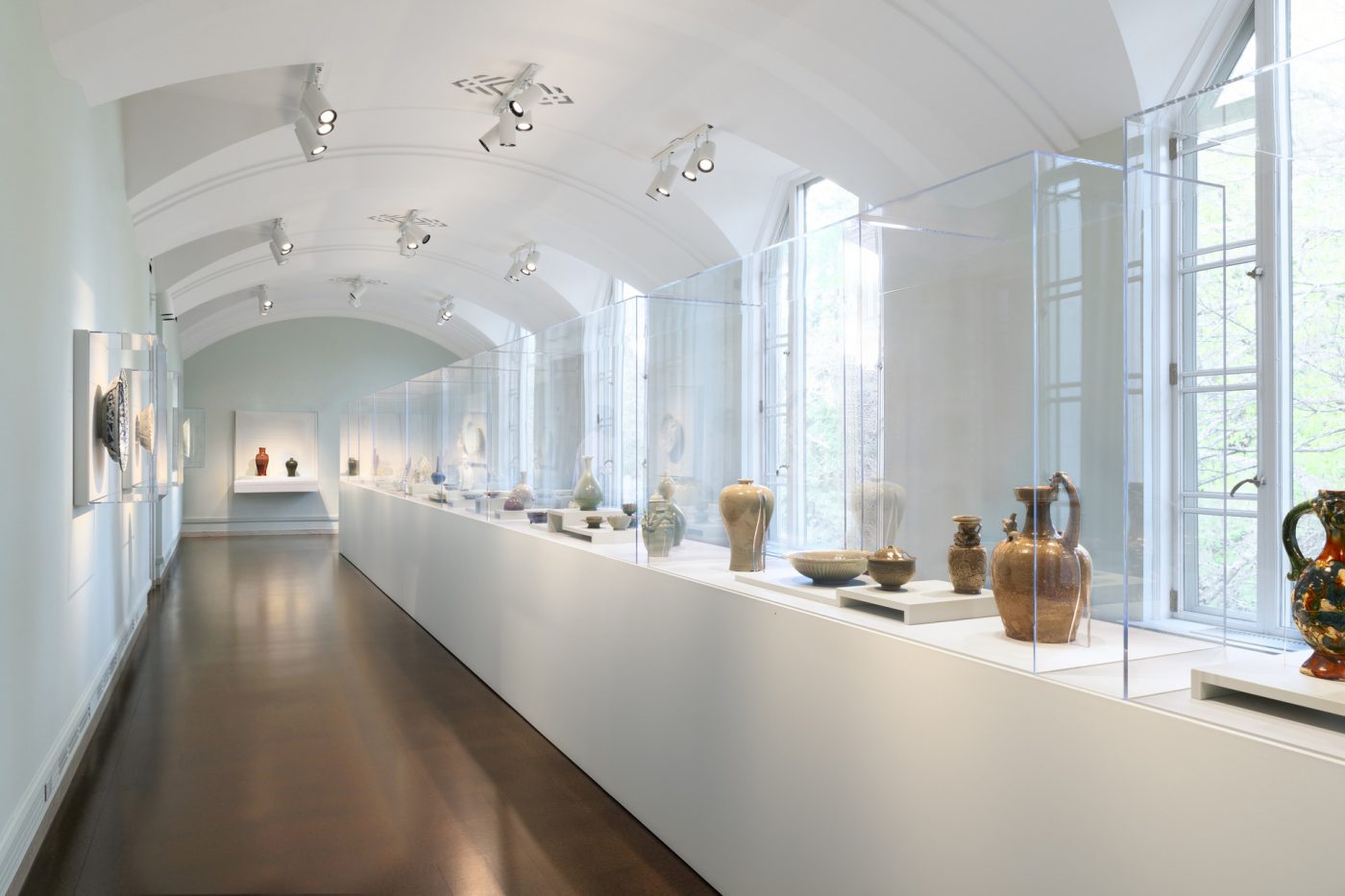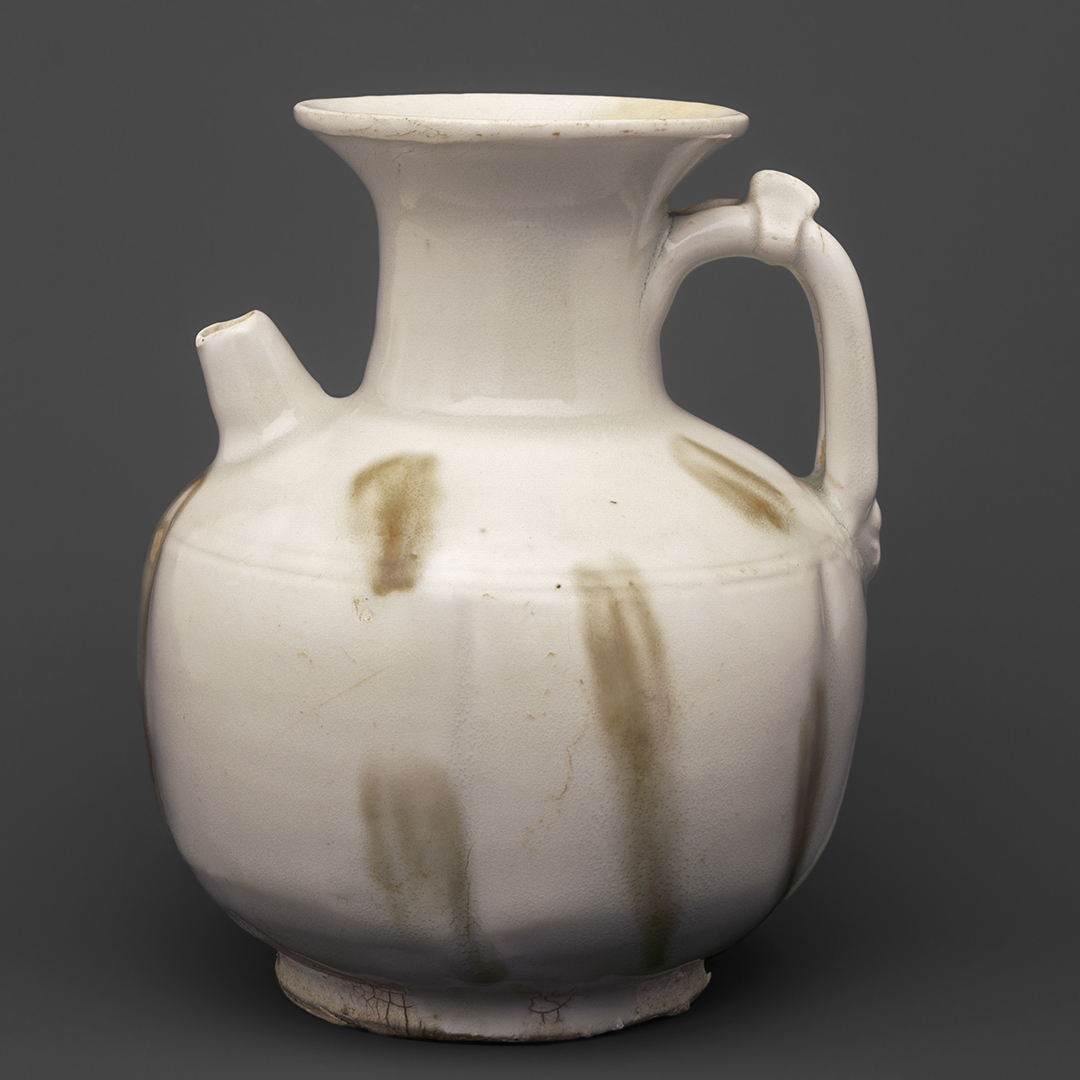Virtual Tour with Carol Frankel
The recently renovated and expanded Asian Art Museum reopened only a few short weeks before SAM had to close due to COVID-19. In this virtual docent tour, Carol Frankel takes us through one of the reimagined galleries—the Color in Clay gallery overlooking Volunteer Park. Carol Frankel has been a SAM docent since 2007. After 25 years at the University of Puget Sound, she became a docent and found her real interest in Asian art. She travels regularly to Japan to visit friends and seek out new and interesting places. When not sleuthing out some Asian art object, she cooks with her grandchildren by FaceTime if not in person.
Many may find this gallery, which is organized solely by color, perplexing. It is filled with several objects, none of which have a label. For me, it’s the most rewarding room to explore, with so many interesting and thought-provoking opportunities. To help narrow our virtual tour, we’ll focus on two colors: blue and white.
We’ll start by looking at blue pieces. Blue can be the most desired and difficult color to achieve in textiles, paints, and ceramics. While we’re focused on this precious hue, you may be surprised that our first three objects are primarily brown, green, and cream.
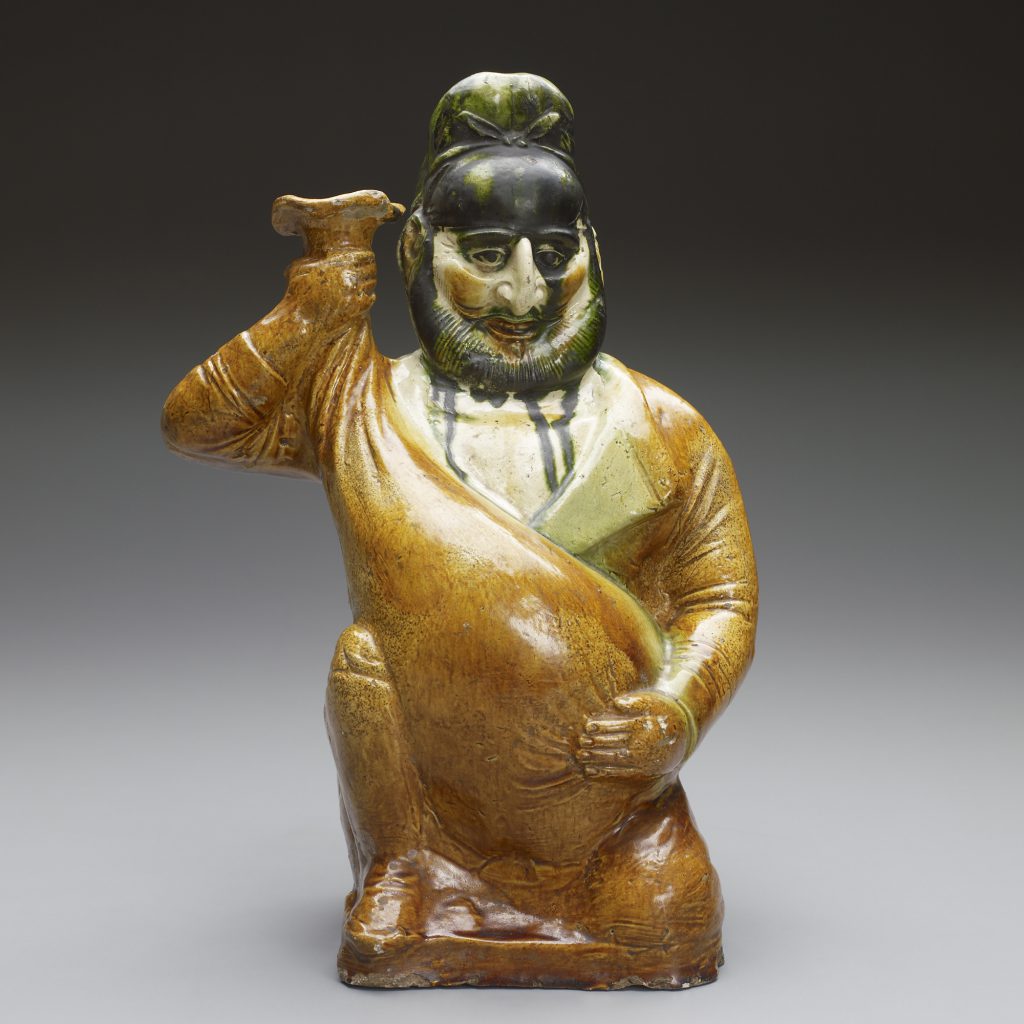
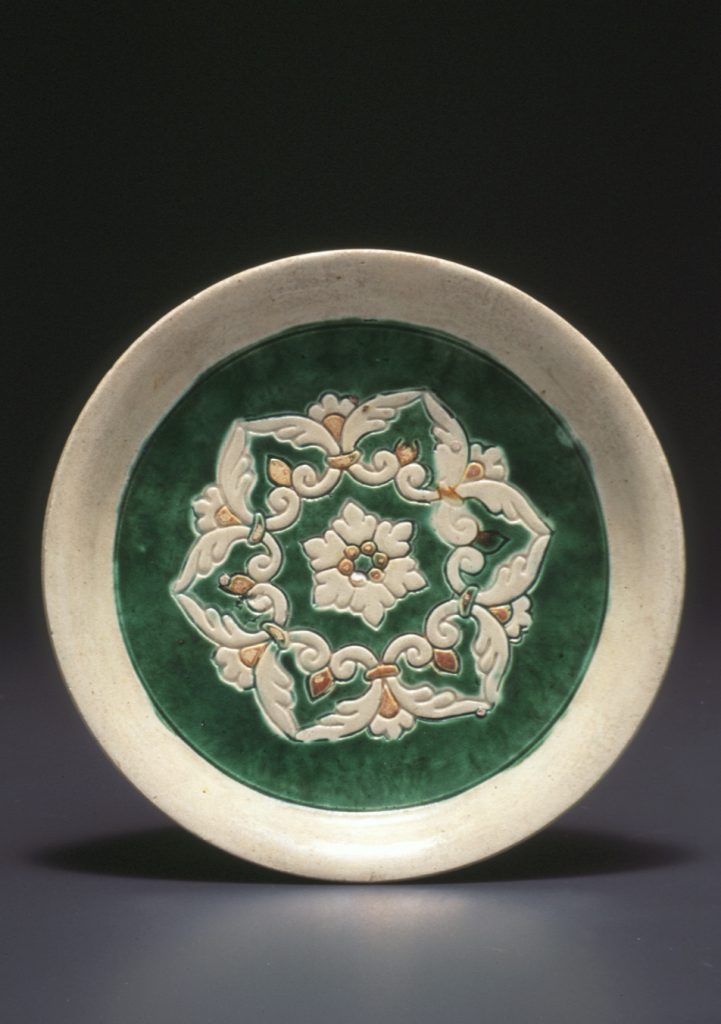
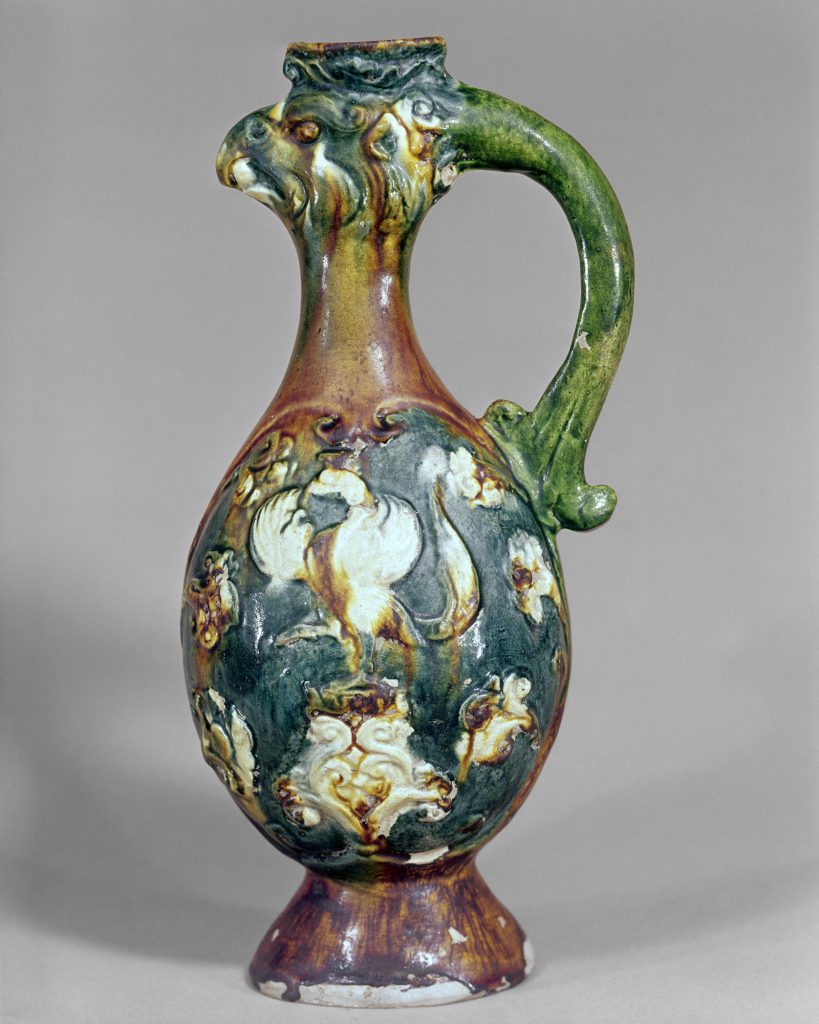
These are sancai 三彩 ware. The name literally translates to “three colors.” A railroad company named these precious objects! There were Tang dynasty tombs still in-tact all over China in the 1920s when the Longhai Railroad started developing rail lines throughout the country. In the process, they dug up many tombs and ceramic pieces. The most prevalent were glazed in three colors: brown, green, and cream. These works were sold to museums all over the world under the name “Tang Dynasty Sancai.”
So why are these on our blue-themed tour? If you look closely, you can see touches of blue and whenever we see blue in Chinese ceramics we can assume it uses cobalt that came from West Asia—also known as the Middle East—where the element was prevalent. This confirms that in the 7th and 8th centuries CE China was trading across the continent. (Additionally, we can see the evidence of trade with the west in the facial structure of the wine merchant.)
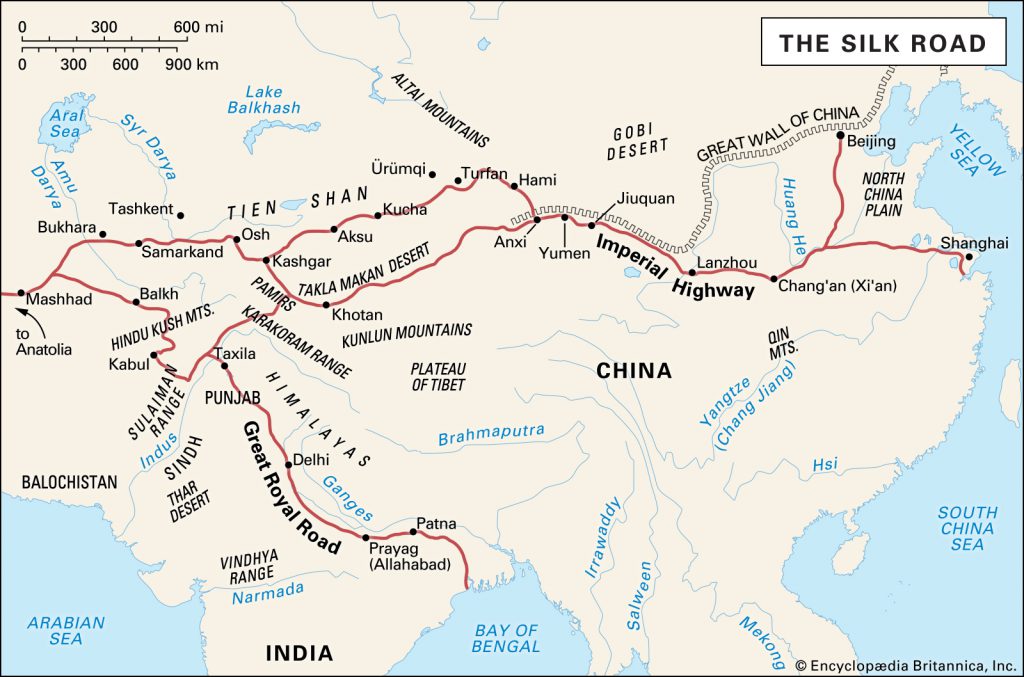
The development of glaze was a notable achievement of the Tang Dynasty, but most important in our exploration of blue and white pottery was the move from the darker clay popular in China at that time to the whiter clay, which eventually led to porcelain. At the end of the gallery, you can see how this change in materials created a spectacular lack of color.
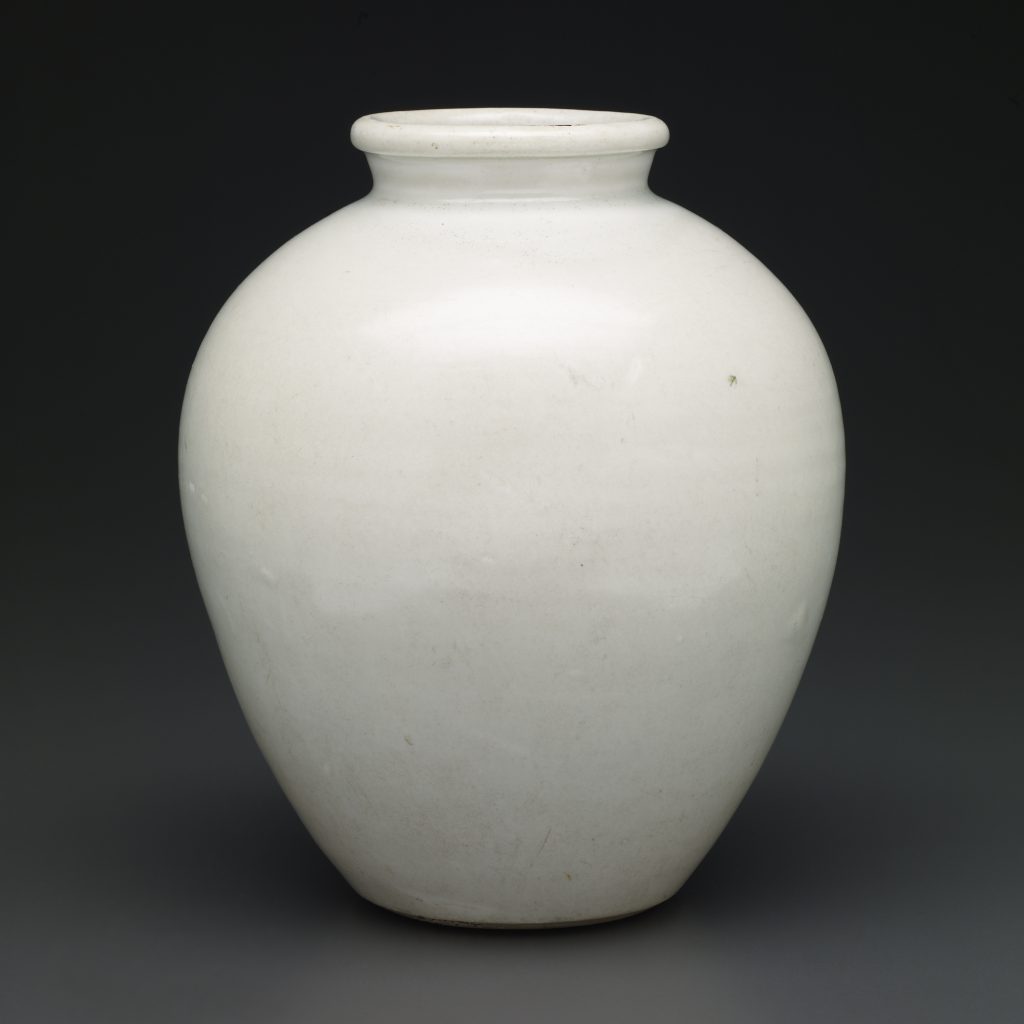
We’ve now seen blue and white separately, and if you were to look to your left in the gallery, you would see the colors combined.
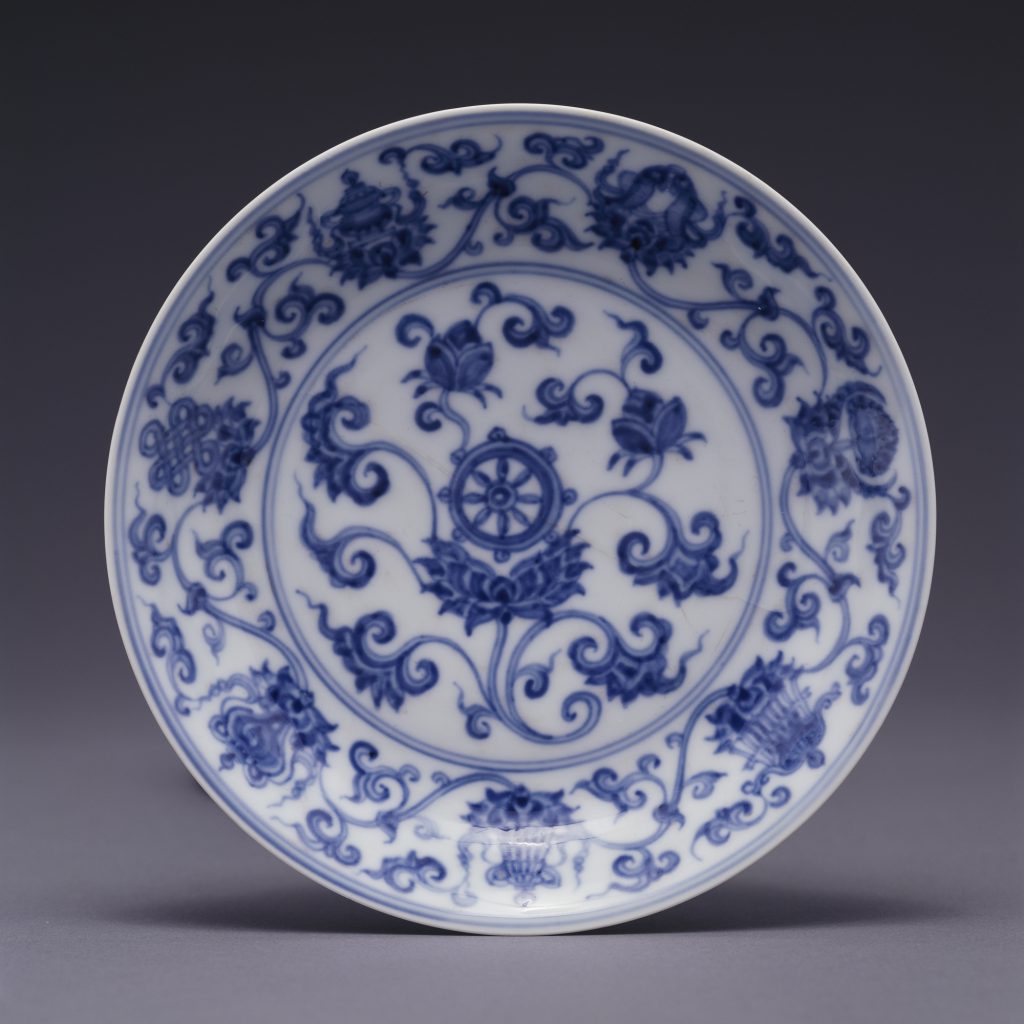
We have now skipped ahead maybe 700 years to the Ming dynasty in China. The Ming blue-and-white objects are what some consider the pinnacle of ceramic ware. In the gallery is a large Ming plate, pictured above, surrounded by blue and white examples from Vietnam and present-day Iran (the origin of the cobalt blue glazes used in the sancai ware).
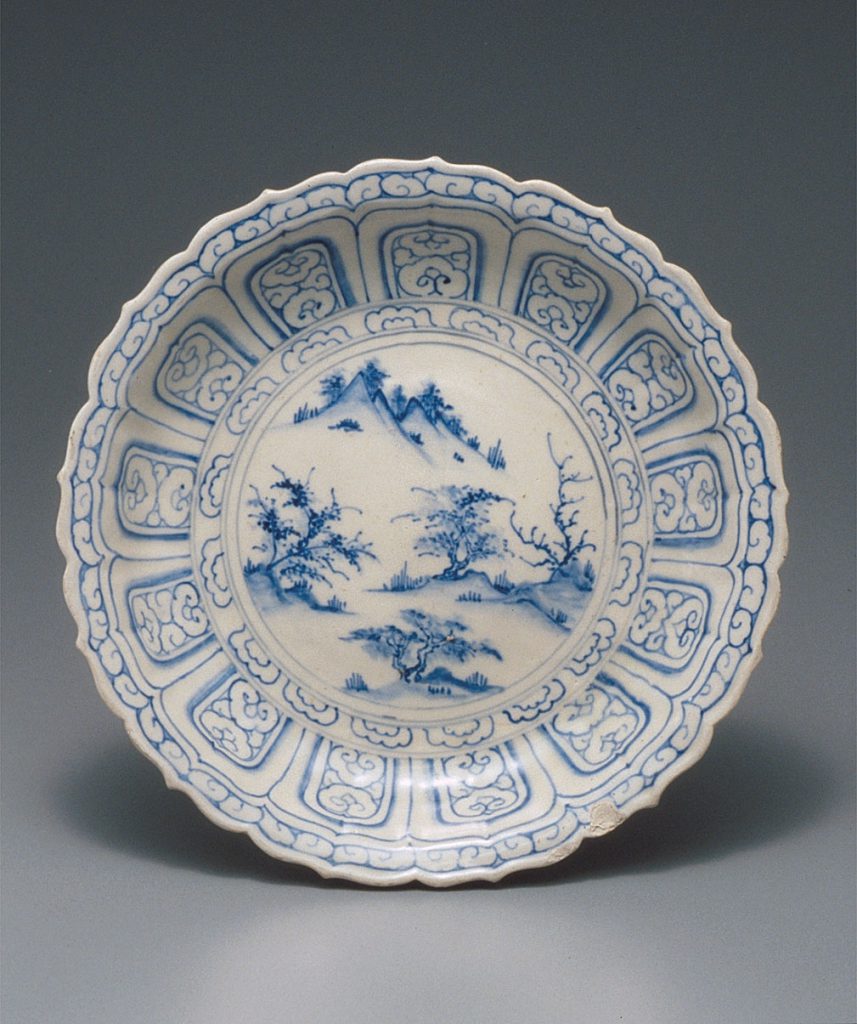
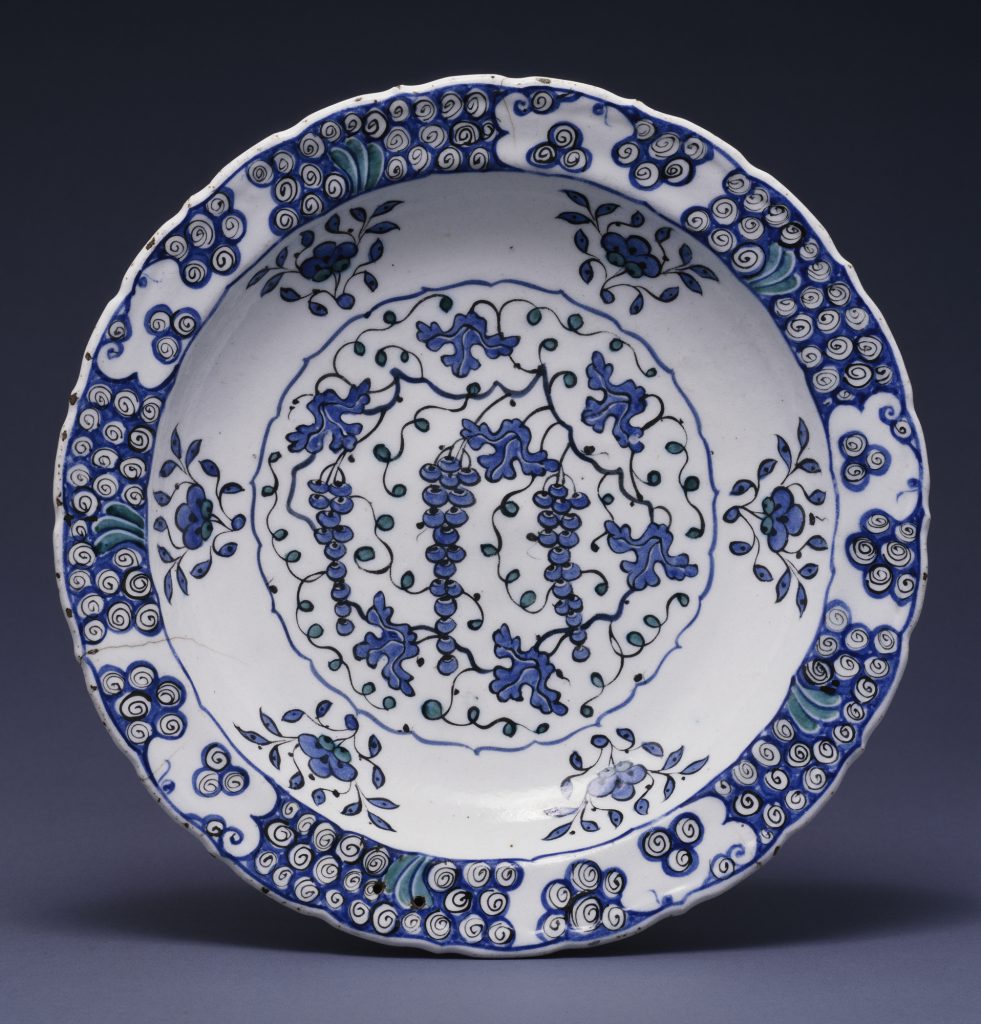
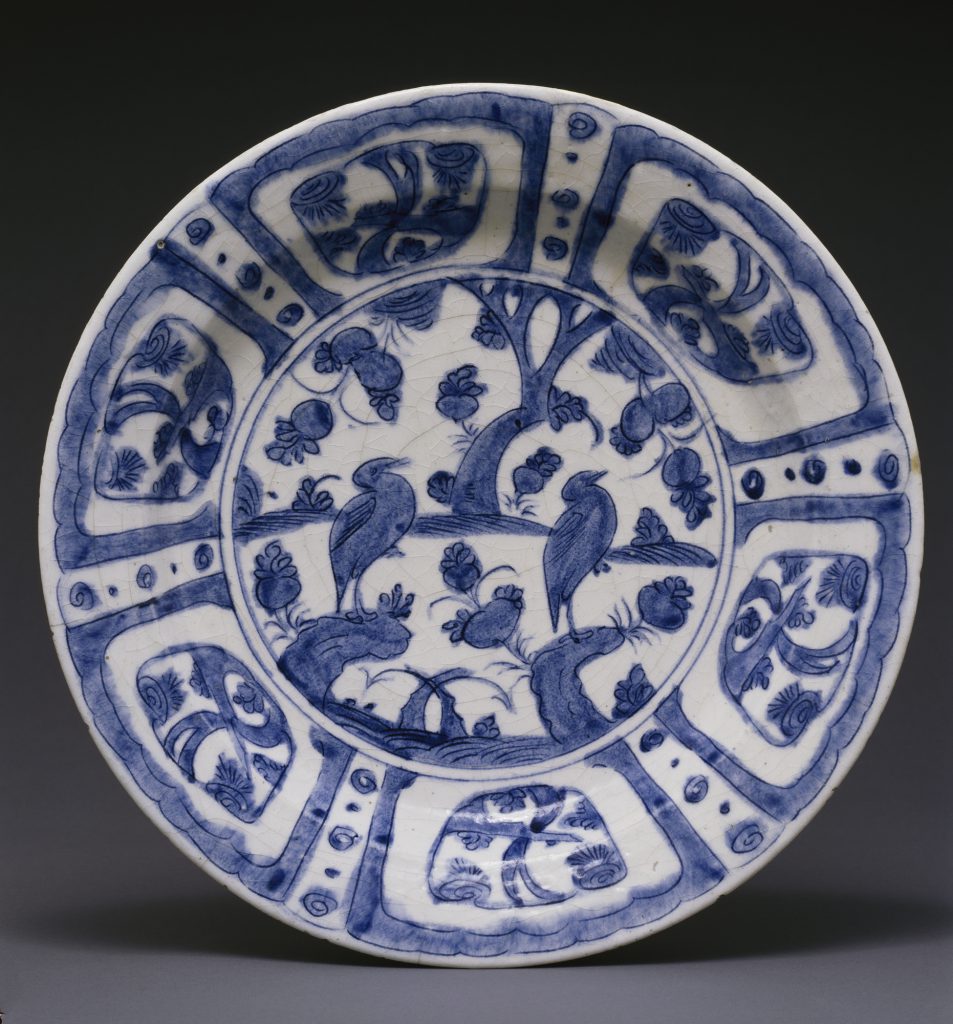
While Persia had the natural resources to create a deep, rich blue, what they didn’t have was the white clay available in China. Their clay was dark and in order to create a good blue and white, they had to first glaze the piece with a white glaze! If you were to look at the unglazed foot of each of these pieces (the back of the plates), you would see a dark gray clay, whereas the accompanying Chinese ceramic’s foot shows a bright white. You can also notice differences in the glazes of these two cultures. While the colors are similar, the lines are slightly different. Look closely at the Persian works and you’ll notice the blue glaze is somewhat blurry and the Chinese blue and white edges are crisp. In China, potters learned to mix the cobalt glaze with some of the indigenous kaolin clay and were able to obtain the sharp edges seen in Ming ceramics.
The world really opens up through the lens of only two colors. Once the museum reopens, you can return to the Color in Clay gallery and explore using another color combination as a vehicle to consider materials, trade, history, and fashion.
– Carol Frankel, SAM Docent
